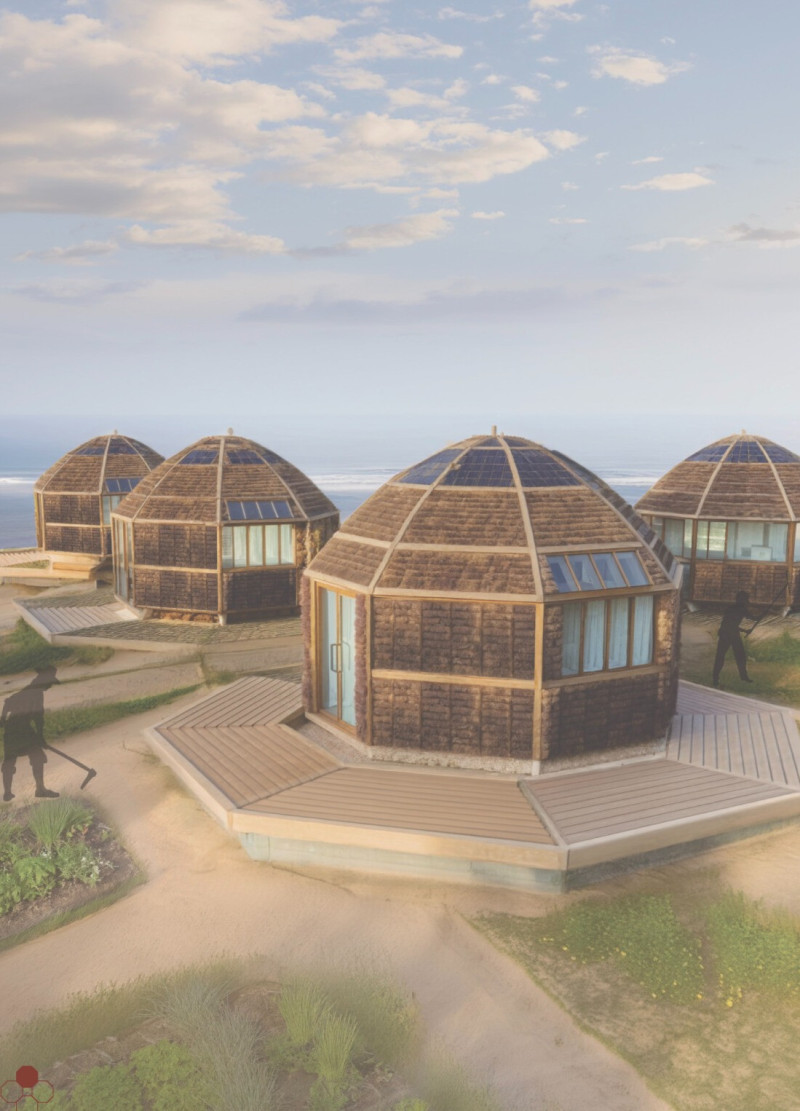5 key facts about this project
At its core, the design serves a multifaceted purpose that includes [insert primary function such as residential, commercial, cultural, etc.], providing a space that fosters community interaction and individual privacy. The project is carefully crafted to accommodate diverse activities, encouraging both social engagement and personal reflection which are essential elements in today’s architectural discourse. The layout is intentionally designed to facilitate the flow of movement, ensuring that users can navigate the space intuitively.
Key elements of this project include its entrance, which establishes a welcoming threshold through thoughtful use of materials and spatial arrangement. The foyer, marked by expansive openings and natural light, offers a seamless transition from the external environment to the internal spaces. Notably, the living areas are designed with flexible configurations that can adapt to various activities, from informal gatherings to intimate family moments. Architectural features such as high ceilings and large windows create a sense of openness, while also enhancing energy efficiency by maximizing daylight use.
Incorporating sustainability was a critical focus during the design process. The selection of materials reflects this commitment to eco-friendly practices, with a palette that includes reinforced concrete for structural robustness, timber that provides warmth and natural beauty, and glass that fosters transparency and connection to the outside world. This thoughtful materiality not only contributes to the building's aesthetic but also plays a crucial role in energy conservation and passive design strategies. For instance, the integration of sustainable technologies such as solar panels and rainwater harvesting systems underpins a broader goal of minimizing the project's environmental impact.
Unique design approaches are evident in various aspects of the project, particularly in how it responds to the local cultural and environmental context. The architects have taken into consideration the climatic conditions of [Geographical Location], resulting in a building that efficiently manages heat and light, thereby enhancing comfort for its occupants. Additionally, the landscaping surrounding the project is designed not merely as a backdrop but as an extension of the living spaces, creating outdoor rooms that offer both functionality and leisure. This blurring of indoor and outdoor boundaries is a central theme, allowing residents to engage with nature while enjoying the comforts of their home.
The project also emphasizes community interaction through the incorporation of shared spaces, such as [insert specific communal areas like courtyards, gardens, or meeting spaces]. These areas are designed to encourage social engagement, providing opportunities for residents and visitors to connect, collaborate, and share experiences. The overall design promotes a sense of belonging and encourages community ties, showcasing a modern understanding of architecture as a tool for social interaction.
Delving into the architectural details, elements such as the facade deserve special attention. The use of [insert specific design elements such as shading devices, decorative panels, or color schemes] not only enhances the visual interest of the building but also serves functional purposes, contributing to energy efficiency and user comfort. The careful consideration of proportions, textures, and coloration in these elements demonstrates a keen attention to detail, informed by both the modern architectural language and the cultural significance of the locale.
Overall, the project stands as a testament to contemporary architectural thought, balancing aesthetic intent with practical application. By exploring elements such as architectural plans, architectural sections, and architectural designs further, readers can gain a deeper understanding of the intricate details that sum up this remarkable project. A visit to the project presentation will reveal more about its architectural ideas and the innovative approaches taken to create a harmonious living environment that resonates with the surrounding community.


























